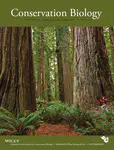Invasion Culturomics and iEcology

Abstract
Introduction Biological invasions are a major threat to global biodiversity and can have substantial socioeconomic costs. Although invasive non–native species have been studied extensively, their monitoring and management are often inadequate (Pergl et al. 2020). Moreover, the great harm invasive non–native species cause tends to be underestimated by the public and their management often opposed (Courchamp et al. 2017). There is a need to better understand societal awareness, perceptions, values, and attitudes toward invasive non–native species and the level of societal support for management plans. However, research to gauge these factors is rare and difficult to implement (Verbrugge et al. 2013; Lindemann–Matthies 2016). Conservation culturomics focuses on the study of human interactions with nature through the quantitative analysis of voluminous digital data to aid conservation (Ladle et al. 2016). It has great potential to inform invasion science and practice by providing new opportunities to gauge societal awareness and attitudes toward invasive non–native species. Digital data can also provide information on distributions, spread dynamic, life history, and impacts of invasive non–native species within the framework of iEcology (Jarić et al. 2020). iEcology is the study of ecological patterns and processes based on ecological data generated for other purposes and stored digitally. Culturomics and iEcology use similar data sources, but iEcology focuses on broad ecological patterns and processes, rather than human–nature interactions.